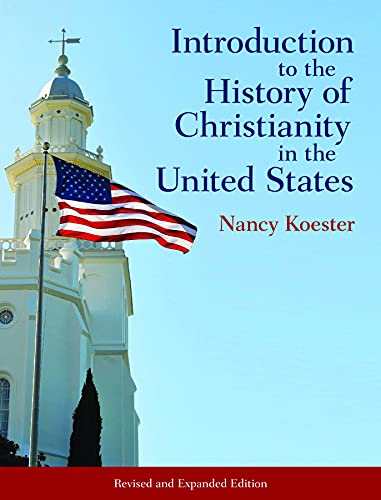Christianity in the United States is a multifaceted tapestry woven from a diverse array of cultural, historical, and theological threads. To understand its evolution, one must delve into the colonial roots, the onset of various denominations, the influence of socio-political movements, and the broader cultural implications. This exploration reveals both the unique trajectory of American Christianity and the underlying factors that continue to shape its expression in contemporary society.
The arrival of Christianity in America can be traced back to the European explorers and settlers who ventured to the New World in the early 17th century. Initially, the Puritans and Pilgrims sought religious freedom, escaping persecution in England. Their motivations were both noble and pragmatic. They aspired to create a “city upon a hill,” a beacon of religious and moral purity. This vision would lay the groundwork for a uniquely American interpretation of Christianity, marked by a strong emphasis on individual conscience and communal governance. The quest for religious liberty became a foundational pillar, fostering an environment where various denominations could flourish.
As the colonies expanded, so too did the religious landscape. The Great Awakening of the 18th century witnessed an unprecedented surge of evangelical fervor. Preachers like Jonathan Edwards and George Whitefield ignited a fervent religious revival that transcended denominational lines, emphasizing personal piety and direct experiences of faith. This momentous upheaval catalyzed the formation of new denominations, including the Baptists and Methodists. The emphasis on emotional experience and personal conversion distinguished these groups and reflected a broader democratization of religion in America.
The fragmentation of American Christianity into a plethora of denominations is both a reflection of the nation’s pluralism and a cause for ongoing theological debates. Denominations such as the Catholic Church, various branches of Protestantism, and newer movements like Pentecostalism contribute to a rich theological dialogue. This diversity indicates more than mere competition; it signals the quest for relevance in a rapidly changing society. Each denomination articulates a unique perspective on faith, morality, and the interpretation of Scripture, responding to the complexities of modern life.
In the 19th century, the intersections of religion and social reform became increasingly apparent. The abolitionist movement, championed by many Christian leaders, underscored the moral imperative of combating slavery. Figures such as Harriet Beecher Stowe and Frederick Douglass invoked biblical rhetoric to advocate for justice and equality. The Second Great Awakening fueled these movements, as religious convictions galvanized believers to pursue societal transformation, highlighting Christianity’s potential to shape moral discourse.
Furthermore, the emergence of the Social Gospel in the late 19th and early 20th centuries marked a significant theological development. Proponents believed that Christianity should address societal injustices by promoting social reform and charity. This movement illustrated a profound engagement with contemporary issues, including poverty, labor rights, and gender equality. However, it also sparked tensions within the church, as some traditionalists resisted what they perceived as a departure from core theological principles. The resulting schisms demonstrated the struggle for a cohesive Christian ethos that could speak to both individual salvation and collective responsibility.
As the nation grappled with the implications of industrialization and urbanization, Christianity in the U.S. also began to intersect with national identity. The post-World War II era heralded a resurgence of evangelicalism, as churches sought to reclaim moral authority. The “Christian Right” movement emerged, intertwining faith with political conservatism. This alignment transformed not only the landscape of American politics but also catalyzed a national conversation about morality, ethics, and governance. The rise of figures like Billy Graham exemplified the gospel’s outreach and the pervasive cultural influence of evangelical Christianity.
The latter part of the 20th century ushered in an era of modernization and secularization, prompting profound reverberations throughout American Christianity. The 1960s and 1970s witnessed the onset of the countercultural movement, which directly challenged traditional values. Many young people sought meaning outside the established church, leading to the rise of new spiritual paradigms. The emergence of the “nondenominational” trend reflected a yearning for authenticity and a desire to engage with faith in less institutionalized settings.
In the contemporary American landscape, Christianity continues to evolve amid challenges and opportunities. Issues such as racial reconciliation, gender equality, and LGBTQ+ rights prompt ongoing dialogue within denominations, highlighting the transformative power of faith amid societal shifts. The globalized context and the advent of technology further complicate the expression of Christianity, as access to diverse interpretations proliferates. This intersection leads to a rich tapestry of belief systems, where individuals grapple with personal faith against the backdrop of a pluralistic society.
Christianity’s history in the United States is a testament to the endurance of faith amidst change. Each denomination, movement, and social reform serves as a reminder of the wrestle between tradition and innovation, authority and autonomy. This intricate journey reveals not only the complexities of American religious life but also the profound connection between faith and the broader cultural narrative. Christianity in the U.S. remains a dynamic force, ever adapting to meet the needs of a diverse and changing population while simultaneously grappling with its sacred tenets and moral imperatives.



